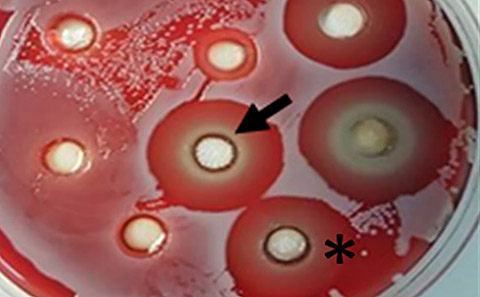Preventing bone infection in bone graft augmentation and impaction bone grafting

Pump-priming networking and funding from NAMRIP produced successful research and subsequent translation to help reduce infection associated with orthopaedic implants.
Orthopaedic implants have heralded an improved quality of life for an increasing aged population. However, the risk of infection leading to implant failure and other serious health complications post-surgery, is an unresolved challenge within orthopaedic surgery.
A set of proof-of-concept studies were undertaken to explore the surface properties that foster bone growth around implants and in bone grafting while minimising infection in pre-clinical and clinical settings. The studies explored whether the application of a nanoclay gel (Laponite) provided a viable route to deliver of biological agents to promote bone formation. In particular, the research considered whether the nanoclay gel would help as a method to deliver antimicrobials to a surgical/wound site, with the promising clinical end goal of utilising this strategy to localise both growth factors and antimicrobials at a tissue site where required.
The team observed good efficacy of low concentration Laponite gels containing chlorhexidine gels (as an antimicrobial) on gram-positive cocci (E. faecalis and S. anginosus). In addition, good efficacy of low concentration dried Laponite gels containing chlorhexidine on gram positive E. Faecalis was observed.
This led to follow-up preliminary work, in a collaboration with Department Science and Technology Laboratory (DSTL), to examine the antimicrobial potential of Laponite with chlorhexidine on a range of bacteria (A. baumannii, E.coli, E. faecalis, K. preumoniae, P. aeruginosa, S. anginosus, S. aureus and S. maltophilial). Laponite provided a high degree of localisation and retention of antimicrobials, with modulation of growth in strains such as E. coli, S. maltolphilia and S. aureus. Furthermore, high concentrations of chlorhexidine within the Laponite hydrogel inhibited the growth of all strains of bacteria.
The image at the top of the page shows a culture plate in which bacterial growth is inhibited around locations of Laponite clay gel and chlorhexidine. In the image, the arrow indicates a location characterized by low% Laponite with 2.0% chlorhexidine, and the asterisk indicates a location characterized by high% Laponite with 0.2% chlorhexidine.
The image at the base of the page plots the time history for the percentage change in the outer diameter of a colony of S. Aureus, comparing the inhibiting effect of clay and chlorhexidine against the control where no clay is present.
The Principle Investigators & Co-Investigators were Dr Janos Kanczler (PI), Dr Jon Dawson (Co-I), Prof Richard Oreffo (Co-I) (all three from the University of Southampton Faculty of Medicine), and, from the Faculty of Engineering and Physical Sciences, Dr Philipp Schneider (Co-I) and Dr Bram Sengers (Co-I). These initial studies carried out by research Tsiloon Li (postodoc) show the feasibility of using Laponite hydrogels as a vehicle for antimicrobial localisation. Following the initial £17,000 of pump-priming funding from NAMRIP, a further £1000 was awarded by Fortisnet, enabling for work with DSTL, Porton Down to test various microbial strains with the antimicrobial / Laponite clay gel.
This promising proof of concept work has now formed the basis for an MRC Translational Medicine DTP funded PhD Case Studentship in collaboration with the spin-out company Renovos Biologics which was founded by team members Oreffo and Dawson to exploit the findings of the properties of the nanogel for reducing the incidence and severity of infections associated with othopaedic implants, and to support bone health. The goal of this studentship is to assess the potential of Renovos’ synthetic nanoclay optimised for medical application, RenoviteTM as a antimicrobial delivery system to treat osteomyelitis in the context of bone regeneration therapies.
